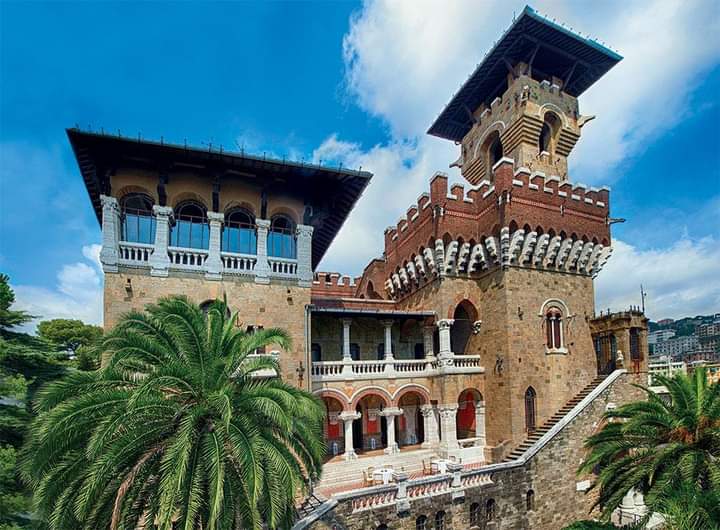Albertis Castle: A Historic Fortress and Museum in Genoa, Italy
Visitor Information
Google Rating: 4.6
Popularity: Medium
Google Maps: View on Google Maps
Official Website: www.castellodalbertis.museidigenova.it
Country: Italy
Civilization: Unclassified
Remains: Military
History
Albertis Castle stands on Montegalletto hill in the Castelletto district of Genoa, Italy. The site has witnessed multiple phases of construction and use, beginning with medieval fortifications built by the Genoese civilization.
The original structure on this location was a 14th-century city bastion that formed part of Genoa’s defensive system. During the 16th century, this bastion was reinforced to adapt to evolving military technologies. Notably, in 1747, the site played a role in the defense of Genoa against Austrian forces; during this conflict, cannons were strategically positioned on the bastion to repel the attackers. This military use highlights the continued strategic importance of the site through several centuries.
Between 1886 and 1892, sea captain Enrico Alberto d’Albertis undertook a major transformation of the area, building what is now Albertis Castle. Constructed atop the remains of the medieval and Renaissance fortifications, the castle was designed by d’Albertis himself with architectural guidance from Alfredo d’Andrade. The inauguration of the castle coincided with the 400th anniversary of Christopher Columbus’s voyage to America, linking the site symbolically to Genoa’s maritime history. After d’Albertis passed away in 1932, he left the castle and his diverse ethnographic collections to the city of Genoa, which has since opened the site as a museum dedicated to world cultures and music.
The castle experienced a period of semi-abandonment in the 1970s but was later restored to accommodate public access and exhibitions. During restoration, earth filling from the bastion was removed to reveal the original masonry and to enhance the visibility of the historical layers beneath the current structure. Local stories also surround the castle, including legends about a door that opens mysteriously and a secret tunnel said to connect the castle with the port, reportedly used by the resistance during World War II.
Remains
Albertis Castle is built upon the foundations of an earlier fortified bastion, creating a complex architectural layering that reflects several centuries of Genoese history. The site preserves the remains of a 14th-century city bastion which underwent strengthening in the 16th century, incorporating a square-plan tower originally replaced by a bastion designed by engineers Graziani and Francesco Parodi. The mixture of medieval defensive structures with later Renaissance reinforcements is visible in the masonry and layout.
The bastion, constructed using traditional masonry techniques, bears original stonework that became more visible following modern restoration efforts. These excavations uncovered a variety of architectural elements spanning medieval, Renaissance, and 19th-century periods which now coexist in a single view. One notable feature is the geometric apex of the bastion, where the original roofing was replaced with a glass structure to protect and showcase the underlying architecture.
Decorative embellishments such as merlons (the notched battlements atop walls) and poliforas (windows divided into multiple openings) reflect the neo-Gothic revival style of the castle, combining influences drawn from medieval Genoese buildings along with Valdostan castles and Florentine palaces. These details were crafted under the artistic direction of Alfredo d’Andrade, with contributions from sculptors Allegro and Marc’Aurelio Crotta.
Within the castle, ethnographic and archaeological collections amassed by Enrico Alberto d’Albertis and his cousin Luigi Maria d’Albertis are displayed. These include weapons from regions such as Sudan and the Zambezi, various European arms like halberds, Chinese spears, and indigenous crafts originating from the North American plains. The interior also houses ship models, nautical instruments, photographs, and d’Albertis’s personal library. Among the exhibits is the Museo delle Musiche dei Popoli, a section devoted to musical instruments from cultures around the world.
The castle is surrounded by a park and a courtyard on Montegalletto hill, with connections to the city below through public transport and an elevator link to Piazza Acquaverde, integrating this historic site within the urban fabric of Genoa.










